Abstract
The orientation of an animal moving in a plane towards a point-like mark is investigated. The control exerted by the optomotor (tracking) response on the motion of the animal is interpreted as an external force acting on the animal itself, which is modeled as a dipole or as a single point.
The optomotor response is assumed as a rather general function of distance and angle. Differential equations governing the motion are derived and analyzed qualitatively and numerically. The role of distance-dependence and of the width of the visual field is investigated in detail and related to some typical kinds of paths in the plane, such as hitting the mark, coming close to the mark within a short distance, circular or undulating motion around the mark.
Similar content being viewed by others
References
Collett, T. S., Land, M. F.: Visual control of flight behavior in the hoverfly, Syritta pipiens L. J. Comp. Physiol. 99, 1–66 (1975)
Collett, T. S., Land, M. F.: Visual spatial memory in a hoverfly. J. Comp. Physiol. 100, 59–84 (1975)
Hsü, I., Kazarinoff, N. D.: An applicable Hopf bifurcation formula and instability of small periodic solutions of the Field-Noyes model. J. Math. Anal. Appl. 55, 61–89 (1976)
Land, M. F., Collett, T. S.: Chasing behaviour in houseflies (Fannia canicularis). J. Comp. Physiol. 89, 331–357 (1974)
Pflugradt, M.: Automatische Aufzeichnung und Auswertung der Wege laufender Mehlkäfer (Tenebrio molitor L.) in der Arena. Diplomarbeit, Tübingen 1978
Poggio, T., Reichardt, W.: A theory of the pattern induced flight orientation of the fly Musca domestica. Kybernetik 12, 185–203 (1973), Biol. Cybern. 18, 69–80 (1976)
Reichardt, W., Poggio, T.: Visual control of orientation behavior in the fly. Part I: A quantitative analysis. Quart. Rev. of Biophysics 9, 311–375 (1976). Part II: Towards the underlying neural interactions, ibid. 377–438 (1976)
Reichardt, W., Poggio, T.: Visual processing in the flight control system of the fly. In: Recent theoretical developments in neurobiology, NRP Bulletin, 135–150, MIT Press, in press
Varjú, D.: Stationary and dynamical response during visual edge fixation by walking insects. Nature 255, 330–332 (1975)
Varjú, D.: Visual edge fixation and negative phototaxis in the meal-worm beetle Tenebrio Molitor L. Biol. Cybern. 25, 17–26 (1976)
Varjú, D.: Personal communication
Wehrhahn, C.: Sex-specific difference in the chasing behavior of houseflies (Musca). Biol. Cybern. 32, 239–241 (1979)
Varjú, D., Bolz, J.: Head movements of the mealworm beetle Tenebrio molitor, Biol. Cybernetics 36, 109–115, 117–124 (1980)
Author information
Authors and Affiliations
Additional information
A first version of this paper has been read at the Oberwolfach Conference on Mathematical Biology, June 1978
Rights and permissions
About this article
Cite this article
Hadeler, K.P., de Mottoni, P. & Schumacher, K. Dynamic models for animal orientation. J. Math. Biology 10, 307–332 (1980). https://doi.org/10.1007/BF00276092
Received:
Revised:
Issue Date:
DOI: https://doi.org/10.1007/BF00276092




